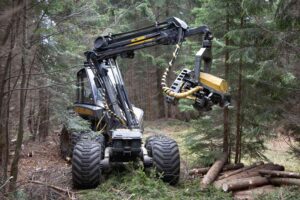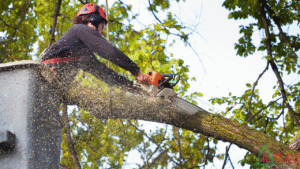Tree Removal Laws in England: A Comprehensive Guide
When you’re managing property in England from across the Atlantic, understanding the local tree removal laws can seem like navigating an unfamiliar forest. Whether you’re an American investor with properties in England, a multinational property management company, or simply curious about international environmental regulations, this comprehensive guide will walk you through everything you need to know about tree removal laws in England.
Understanding the Framework of Tree Protection in England
England’s approach to tree protection reflects its deep cultural connection to its wooded landscape. The regulations governing tree removal are designed not just to preserve scenic beauty but to protect ecological diversity, historical significance, and community well-being. Unlike the varied state and county regulations you might be familiar with in the US, England has a more centralized system, though local authorities still play a crucial role in enforcement and decision-making.
The primary legal mechanisms for tree protection in England include Tree Preservation Orders (TPOs), Conservation Areas, felling licenses, and various planning permissions. Each of these tools provides different levels of protection and requires different procedures for compliance. Understanding which regulations apply to your specific situation is the first step toward legal compliance and responsible land management.
The Historical Context of Tree Protection Laws
England’s formal tree protection system began with the Town and Country Planning Act of 1947, which introduced Tree Preservation Orders. Since then, the legal framework has evolved significantly, with major updates in 1990 and 2012. This evolution reflects changing environmental priorities and growing recognition of trees’ importance to ecosystem health, carbon sequestration, and community well-being.
Before these formal protections, many trees were already protected through common law, land ownership customs, and Royal designations dating back centuries. The ancient tradition of designating Royal Forests, for example, created protections for trees that predate modern environmental law by hundreds of years.
Today’s system represents a blend of this historical awareness with modern environmental science and urban planning principles. As you navigate these regulations from a US perspective, understanding this historical context can help explain why certain protections seem particularly stringent compared to what you might be accustomed to.
Tree Preservation Orders (TPOs): The Cornerstone of Protection
Tree Preservation Orders represent the strongest form of protection for individual trees or groups of trees in England. A TPO makes it an offense to cut down, top, lop, uproot, willfully damage, or willfully destroy protected trees without permission from the local planning authority.
TPOs can be applied to any type of tree that contributes to public amenity, but cannot be applied to bushes or shrubs. They can protect individual trees, groups of trees, or even entire woodlands. Once a TPO is in place, it generally remains effective indefinitely, transferring with the property when ownership changes.
Here’s a breakdown of what you need to know about TPOs:
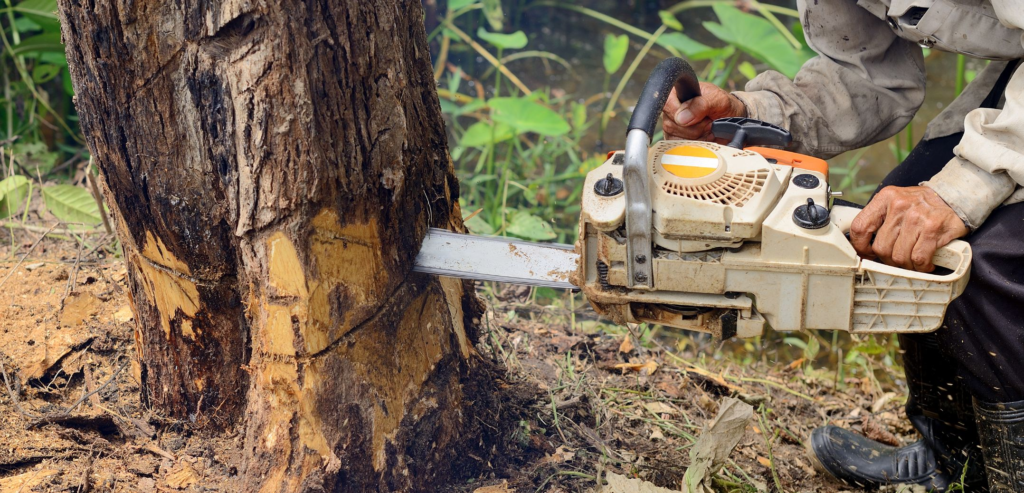
How to Determine if a Tree Has a TPO
If you’re managing property remotely from the US, determining whether trees on your English property have TPOs can be done through several methods:
- Check the property documents from your purchase. TPOs should be disclosed during property transactions.
- Contact the local planning authority (council) for the area where the property is located. They maintain registers of all TPOs in their jurisdiction.
- Hire a UK-based arboricultural consultant who can research this information for you.
Many local authorities now maintain online registers of TPOs, making this information more accessible for international property owners. For example, you can access the TPO register for Greater London through the London Tree Officers Association website.
Applying for Work on TPO-Protected Trees
If you discover that trees on your property are protected by TPOs, you’ll need permission before undertaking any work beyond routine maintenance. Here’s the process:
- Submit an application to the local planning authority using the standard form available from the UK government’s Planning Portal.
- Provide detailed information about the proposed work, including reasons for the work and, often, an arboricultural report.
- Wait for a decision, which typically takes eight weeks.
- If approved, complete the work according to the specific conditions outlined in the permission.
Applications can be submitted online, which is particularly convenient for overseas property owners. The Planning Portal website offers guidance specifically for international applicants unfamiliar with UK planning procedures.
Exceptions and Emergency Work
There are limited exceptions to TPO restrictions:
- Dead, dying, or dangerous trees: You can remove these without prior permission, but you should notify the local authority and may need to provide evidence of the tree’s condition.
- Nuisance prevention: You may undertake work necessary to prevent or abate a nuisance.
- Implementing planning permission: If development has been approved that necessitates tree removal.
Even in these cases, it’s advisable to document the condition of the tree thoroughly before proceeding, especially when managing property from overseas. Photographic evidence and professional assessments can be crucial if your decision to remove a tree is later questioned.
Tree Protection in Conservation Areas
If your property is located within a designated Conservation Area, trees receive automatic protection similar to (though slightly less stringent than) those covered by TPOs. Conservation Areas are designated to protect areas of special architectural or historic interest, and tree protection is part of preserving the character of these areas.
Conservation Area Tree Protection Requirements
For trees within Conservation Areas:
- You must give the local planning authority six weeks’ notice before carrying out work on trees with a trunk diameter of more than 75mm when measured at 1.5m from ground level (or more than 100mm if reducing the tree to improve growth of other trees).
- During this notice period, the authority will decide whether to place a TPO on the tree.
- If they don’t respond within six weeks, you can proceed with the proposed work.
This requirement applies regardless of whether the trees contribute significantly to the area’s character, making Conservation Area tree protection somewhat broader than TPO protection. For American property investors, this is an important consideration when purchasing property in historic English towns or neighborhoods.
The table below summarizes the key differences between TPO protection and Conservation Area protection:
| Aspect | TPO Protection | Conservation Area Protection |
|---|---|---|
| Application | Selected trees of significant amenity value | All trees above specified size in designated areas |
| Prior notice required | Yes – formal application | Yes – six weeks’ notice |
| Decision timeframe | 8 weeks | 6 weeks |
| If no response received | Permission denied by default | Permission granted by default |
| Duration of protection | Indefinite | Automatic with no expiration |
| Penalties for violations | Up to £20,000 or twice the value of the tree | Same as TPO violations |
Felling Licenses: Regulating Larger-Scale Tree Removal
For larger-scale tree removal that doesn’t fall under TPO or Conservation Area regulations, you may need a felling license from the Forestry Commission. This is particularly relevant if you’re managing rural properties or larger estates with significant woodland.

When You Need a Felling License
A felling license is generally required if you want to cut down more than 5 cubic meters of timber in any calendar quarter. There are exemptions, including:
- Trees in gardens, churchyards, and public open spaces
- Trees with a diameter less than 8cm (measured at 1.3m from the ground)
- Trees being removed to prevent spread of disease (with certain documentation requirements)
- Trees being removed under approved planning permission
For American investors managing forestry assets or large rural properties in England, understanding felling license requirements is crucial to avoid significant penalties.
The Application Process for Felling Licenses
The application process involves:
- Completing an application form available from the Forestry Commission website
- Providing maps and details of the proposed felling
- Potentially developing a restocking plan for replacement planting
- Waiting approximately 10 weeks for a decision
Unlike TPOs and Conservation Area notices, which are handled by local authorities, felling licenses are administered nationally by the Forestry Commission. This centralized approach can actually be simpler for international property managers to navigate.
The table below outlines the volume thresholds for felling licenses:
| Volume of Timber | Timeframe | License Required? |
|---|---|---|
| Up to 5 cubic meters | Per calendar quarter | No |
| More than 5 cubic meters but less than 10 cubic meters | Per calendar quarter | Yes, unless exemption applies |
| 10 cubic meters or more | Per calendar quarter | Yes, with rare exceptions |
| Any volume | For sale | Yes, regardless of volume |
Hedgerow Regulations: Additional Protection for Rural Boundaries
An aspect of England’s tree protection system that often surprises American property owners is the protection extended to hedgerows through the Hedgerows Regulations 1997. These regulations protect countryside hedgerows of historical, archaeological, or wildlife importance.
Protected Hedgerows Criteria
For a hedgerow to be considered “important” and therefore protected:
- It must be at least 30 years old, and
- It must meet at least one criterion from a list including historical significance, connection to archaeological features, or supporting protected wildlife species.
If you’re planning to remove a potentially important hedgerow, you must submit a Hedgerow Removal Notice to the local planning authority and wait 42 days for their decision.
This protection reflects the cultural and ecological significance of England’s ancient field boundaries, many of which date back hundreds of years and form crucial wildlife corridors. For US investors in rural English properties, these protections represent a unique aspect of land management that has few parallels in American property law.
Planning Permission and Trees
Beyond the specific tree protection mechanisms already discussed, general planning permission requirements can also affect your ability to remove trees.
Trees and Development Proposals
If you’re planning property development in England, tree considerations should be integrated into your planning from the earliest stages. Planning applications that might affect trees require:
- A comprehensive tree survey identifying all trees on and adjacent to the site
- An arboricultural impact assessment evaluating the effects of the proposed development on trees
- A tree protection plan showing how retained trees will be protected during construction
- Sometimes, an arboricultural method statement detailing specific construction techniques to minimize impacts on trees
Planning authorities in England typically place significant weight on tree preservation when evaluating development proposals. As an American investor or developer working in England, you may find tree protection requirements more stringent than in many US jurisdictions.
The following table shows how tree considerations factor into different types of planning applications:
| Type of Application | Tree Information Required | Typical Timeline for Tree Assessment |
|---|---|---|
| Outline Planning Permission | Initial tree survey | 8-12 weeks as part of application |
| Full Planning Permission | Comprehensive tree information including protection plans | 8-12 weeks as part of application |
| Reserved Matters | Detailed tree protection methodology | 4-8 weeks as part of submission |
| Discharge of Tree-Related Conditions | Evidence of compliance with tree protection requirements | 4-8 weeks |
Penalties and Enforcement for Tree Protection Violations
The consequences for violating tree protection regulations in England can be severe, with both criminal and civil penalties possible. For American property owners or managers, understanding these penalties is crucial, as claiming ignorance of English law will not be considered a valid defense.
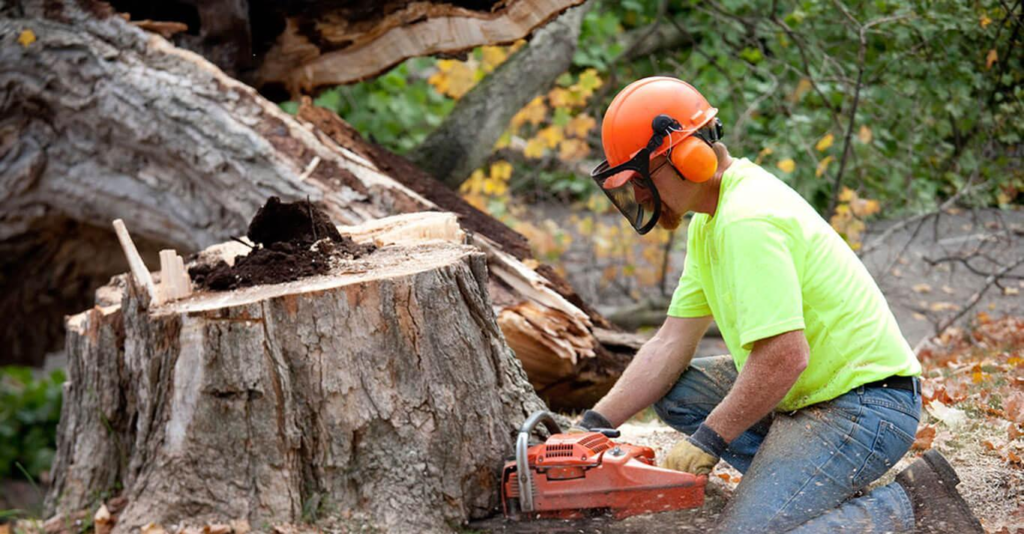
Criminal Penalties
Unauthorized work on protected trees can result in:
- Fines of up to £20,000 for each tree in Magistrates’ Court
- Unlimited fines for serious cases tried in Crown Court
- Criminal records for responsible parties
In cases involving development sites, courts can also consider any financial benefit gained from the offense when determining penalties, potentially resulting in much higher fines.
Replacement Planting Requirements
Beyond direct penalties, authorities can issue:
- Tree Replacement Notices requiring planting of replacement trees
- Restocking Notices for unauthorized woodland removal
- Ongoing maintenance obligations that can last for years
These requirements follow the land, meaning that if you purchase property where trees were illegally removed, you may inherit the obligation to plant and maintain replacement trees even if you weren’t responsible for the original violation.
Recent Enforcement Examples
Recent years have seen increasingly serious enforcement of tree protection laws in England:
- In 2021, a property developer in London was fined £80,000 for removing protected trees to increase a development site’s market value.
- A homeowner in Surrey received a £20,000 fine in 2020 for cutting down a 200-year-old protected oak tree that blocked their view.
- A hotel company was ordered to pay over £250,000 in combined fines and compensation after removing a line of mature trees during renovation work.
For US-based property owners, the key takeaway is that English authorities are taking tree protection increasingly seriously, with penalties designed to remove any potential financial benefit from violations.
Special Considerations for Specific Situations
Beyond the general framework already discussed, certain situations involve additional or specialized considerations for tree removal.
Ancient and Veteran Trees
England places particular value on ancient and veteran trees, which are trees of exceptional age, size, or ecological or historical importance. These trees may receive protection beyond standard TPOs, and works affecting them face heightened scrutiny.
The Ancient Tree Inventory, maintained by the Woodland Trust, identifies many of these trees. If your property contains what might be considered an ancient or veteran tree, specialized arboricultural advice is essential before considering any work.
Trees and Protected Species
Many tree removal restrictions are linked not just to the trees themselves but to the wildlife they support. Several protected species in England commonly make their homes in trees:
- Bats (all species are protected)
- Certain bird species during nesting season
- Dormice and other protected mammals
If protected species are present, you’ll need additional wildlife licenses regardless of the tree’s protection status. The timing of work may also be restricted to avoid breeding or hibernation periods.
Trees and Utility Lines
Trees near power lines, water mains, or other utilities present special cases. Utility companies have certain rights to manage trees affecting their infrastructure, but these rights are balanced against tree protection requirements.
If you’re concerned about trees on your property interfering with utility lines, it’s generally best to contact the utility company rather than attempting to resolve the issue yourself. They have established protocols for dealing with protected trees.
Navigation Tips for American Property Owners
Managing tree removal regulations from across the Atlantic presents unique challenges. Here are some practical tips to help you navigate these requirements effectively:
Establish a Local Network
Developing relationships with UK-based professionals is invaluable:
- Retain a qualified arboriculturist familiar with local regulations
- Identify a reputable tree surgery company with experience in regulatory compliance
- Consider a property management company with specific expertise in tree-related regulations
- Establish contact with the local planning authority’s tree officer
These local contacts can serve as your eyes and ears on the ground, helping you understand and comply with regulations that might otherwise be difficult to navigate from a distance.
Documentation and Record-Keeping
When managing property remotely, thorough documentation becomes even more important:
- Maintain a register of all trees on your property, noting any with protected status
- Keep comprehensive records of all tree work, including photographs before and after
- Archive all correspondence with authorities regarding tree works
- Document the condition of trees regularly, particularly after severe weather events
This documentation can be crucial if you need to prove that work was emergency-related or demonstrate your compliance history.
Planning for Seasonal Restrictions
Tree work in England is often subject to seasonal restrictions:
- Bird nesting season (generally March to August) may limit non-emergency work
- Certain tree diseases are more easily spread during specific seasons
- Some protected species have seasonal protection periods
When managing property from overseas, planning tree work well in advance helps navigate these seasonal limitations and ensures you can coordinate with local contractors during appropriate windows.
Recent Developments and Future Trends
Tree protection in England continues to evolve, with several recent developments worth noting for international property investors.
Environment Act 2021 Implications
The Environment Act 2021 introduced new provisions affecting tree protection, including:
- Increased duties for local authorities to consult before removing street trees
- New requirements for developers to provide biodiversity net gain, often involving tree planting
- Enhanced protection for trees in designated “protected sites”
These provisions reflect a trend toward strengthening rather than relaxing tree protection, a direction likely to continue as climate change concerns intensify.
Brexit and Tree Protection
The UK’s exit from the European Union has implications for some aspects of environmental protection. While most tree protection mechanisms were already contained in domestic UK law, some changes may emerge in areas previously governed by EU directives.
For instance, Environmental Impact Assessment requirements, which often address tree impacts for larger developments, are being reviewed and potentially modified following Brexit. American investors should stay alert to these evolving requirements.
Climate Emergency Declarations and Tree Policies
Many local authorities in England have declared climate emergencies, leading to strengthened tree protection and ambitious tree planting targets. These declarations often result in:
- More stringent application of existing tree protection powers
- New local policies favoring tree retention
- Increased replacement planting requirements when tree removal is permitted
For property owners and developers, these local climate policies can significantly impact tree-related decisions, even when formal regulations haven’t changed.
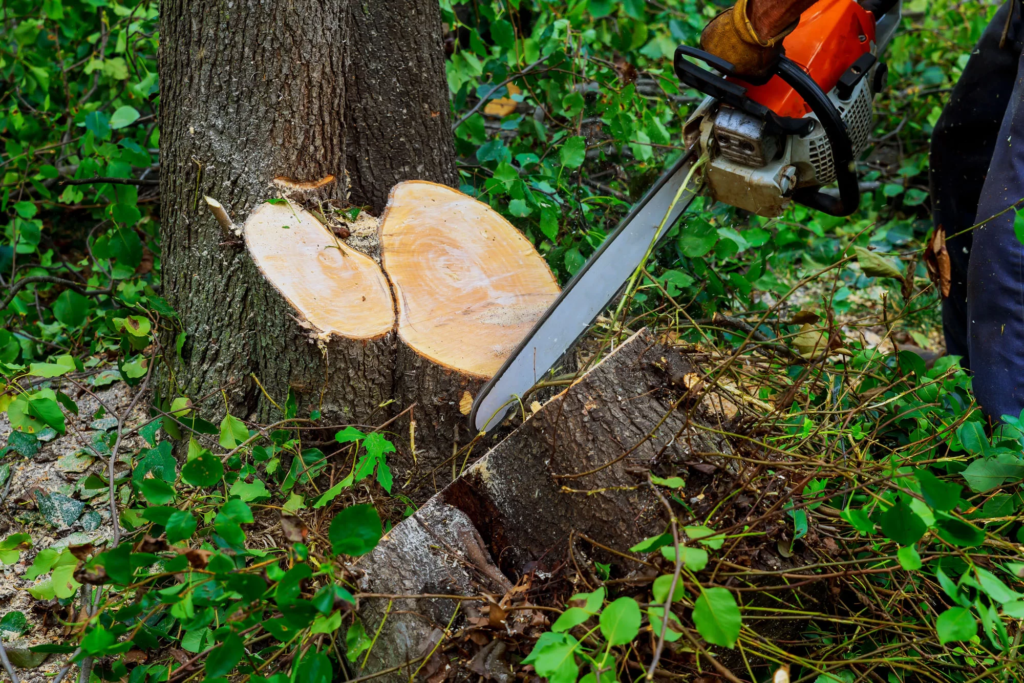
Practical Steps for Compliance
To ensure compliance with England’s tree protection framework while managing property from the US, follow these practical steps:
Step 1: Assessment and Due Diligence
Before purchasing property or planning any tree work:
- Commission a tree survey from a qualified UK arboriculturist
- Check for TPOs, Conservation Area designations, and other protections
- Identify any ancient or veteran trees on the property
- Assess potential wildlife habitat issues
This preliminary due diligence can prevent costly surprises later and should be considered part of your standard property investment process in England.
Step 2: Develop a Tree Management Plan
For ongoing property management:
- Create a comprehensive inventory of trees on your property
- Establish a regular inspection schedule
- Identify potential risk trees that may require future work
- Plan for appropriate succession planting
A proactive management plan helps you address issues before they become emergencies and demonstrates responsible stewardship to local authorities.
Step 3: Build Relationships with Local Authorities
Particularly for remote property management:
- Introduce yourself to the relevant tree officer
- Understand local priorities and concerns
- Discuss long-term plans for your property’s trees
- Establish communication protocols for emergencies
Building these relationships in advance can smooth the approval process when you do need to undertake tree work.
Conclusion: Respecting England’s Arboreal Heritage
England’s comprehensive tree protection system reflects the cultural value placed on trees within the English landscape. For American property owners and investors, understanding and respecting these protections is not just about legal compliance—it’s about acknowledging the historical, ecological, and community significance of trees within the English context.
By approaching tree management with proper knowledge, respectful planning, and professional guidance, you can successfully navigate these regulations while contributing positively to England’s environmental heritage. Remember that these protections have evolved over centuries to preserve a landscape that many consider a national treasure.
For more information about tree protection laws in England, visit the UK government’s official guidance at https://www.gov.uk/guidance/tree-preservation-orders-and-trees-in-conservation-areas.
Note: While this guide provides comprehensive information about tree removal laws in England as of March 2025, regulations can change. Always verify current requirements with local authorities before undertaking any tree work.


